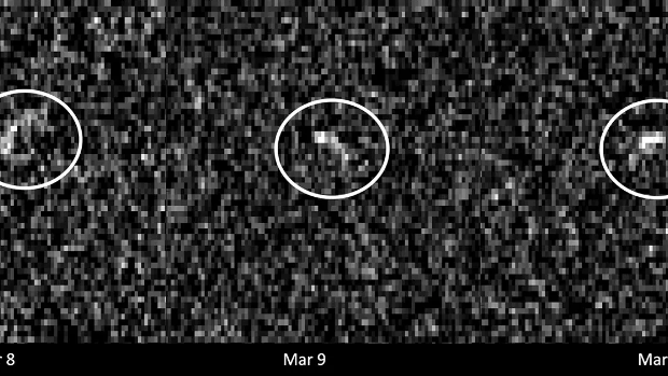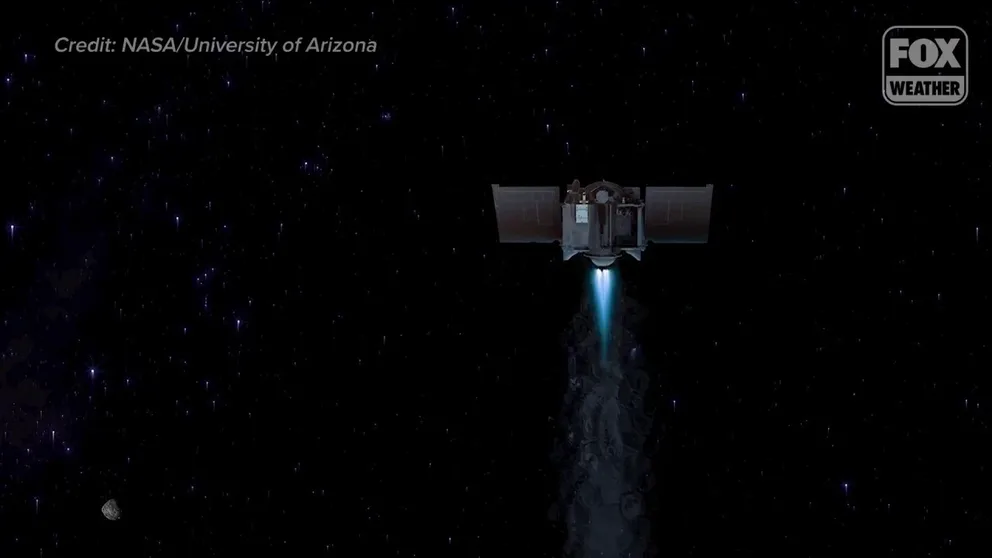Europe’s Ramses spacecraft to have front row seat when asteroid whizzes by Earth in 2029
Asteroid Apophis earned its name from the demon serpent in Egyptian mythology. During its 2029 close flyby of Earth, it will have a NASA and ESA spacecraft studying the asteroid.
NASA asteroid spacecraft gets a second mission
2022 FILE VIDEO: NASA's OSIRIS-REx spacecraft got approved for a second mission to study asteroid Apophis when it makes a close flyby of Earth in 2029.
When the asteroid Apophis comes zooming by Earth, close enough to see without a telescope, it will have two spacecraft closely watching the historic flyby to help scientists formulate a game plan to protect our planet.
The European Space Agency (ESA) announced this week it plans to launch the Rapid Apophis Mission for Space Safety, or Ramses, spacecraft in 2028, just in time to be ready to welcome asteroid Apophis during its close approach.
Apophis, named for the demon serpent in Egyptian mythology, is expected to pass within 20,000 miles of Earth’s surface on April 13, 2029.
CHINA PLANNING ASTEROID RE-DIRECT MISSION FOR PLANETARY DEFENSE TEST
The approximately 1,200-foot-wide asteroid earned a lot of attention after its discovery in 2004 because astronomers believed it might be on a path to collide with our planet. By March 2021, astronomers changed their assessment and ruled out a crash course with Earth.

These images of asteroid Apophis were recorded in March 2021 by radio antennas at the Deep Space Network’s Goldstone complex in California and the Green Bank Telescope in West Virginia. The asteroid was 10.6 million miles away, and each pixel has a resolution of 127 feet. (Image credit: NASA/JPL-Caltech and NSF/AUI/GBO)
(NASA)
However, Apophis is still coming astronomically close to our planet — close enough that about 2 billion people across Europe, Africa and parts of Asia will be able to see it shoot through the night sky.
Scientists around the world are trying to take advantage of this close approach to learn as much as they can about protecting Earth from asteroids and the clues they provide about our solar system.
After completing its first mission, dropping off a sample of the asteroid Bennu to Earth, NASA’S OSRIS-APEX spacecraft is already in space waiting for the flyby. However, it won’t have its closest views until about a month after the flyby, according to the ESA.
EVERYTHING SCIENTISTS WOULD WANT TO KNOW IF AN ASTEROID WAS HEADING TOWARD EARTH
The ESA hopes to use Ramses as a reconnaissance mission to gather information about how humans could respond to a potentially hazardous asteroid.
"This type of mission is a cornerstone of humankind’s response to a hazardous asteroid," said Richard Moissl, the head of ESA's Planetary Defense Office. "A reconnaissance mission would be launched first to analyze the incoming asteroid’s orbit and structure. The results would be used to determine how best to redirect the asteroid or to rule out non-impacts before an expensive deflector mission is developed."
Ramses will use a suite of scientific instruments to survey the asteroid's shape, surface, orbit, rotation and orientation before and after the flyby.
Because of the time constraints, ESA gave the green light this week to begin preparations for Ramses with a final mission approval in 2025.
